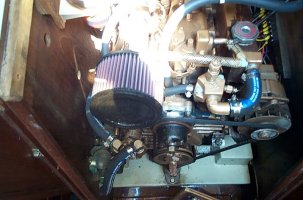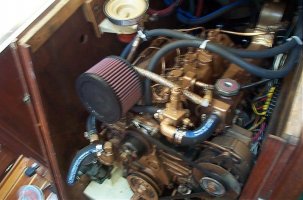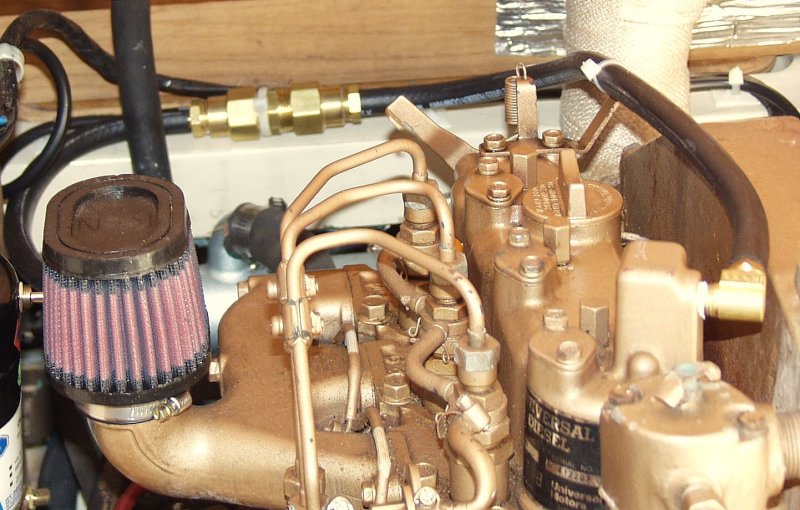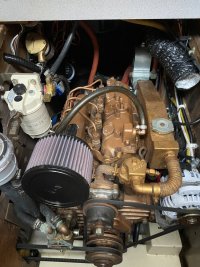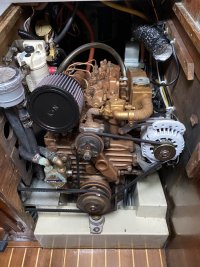Hello All,
A while back someone here was asking questions about air filters on Universal engines. At the time I figured that whatever Universal thought appropriate to install on my 5432 was fine. Upon inspection, I have reconsidered that position. The factory air intake "horn" is a funny looking teardrop shaped chunk of metal that I never really looked at.
The intake is quite small @ only 1" X 1 1/2" and it has a coarse metal screen riveted over the opening. Mine was about half plugged with muck. The intake manifold itself it just shy of 2" round so even thats larger than the opening in the horn. Since it was pointing down I never looked at it.... While I realize that these engines are not large displacement they do need as much air as possible to do their job well. A diesel will smoke as well as run high coolant and exhaust temps if the intake is overly restrictive, especially at high power levels.
So I went looking and I think I found a nice upgrade. http://www.knfilters.com/search/product.aspx?Prod=RA-0470 I purchased one of these ra-0470 filters and installed it. It has a nice port on the backside for the breather tube to insert into and the base is offset to clear the rest of the engine/accessories. I tried sucking through the factory air horn, for testing purposes only, and could easily feel the restriction in my breathing. Breathing through the K&N was as if it wasn't there. So whats this mean? I have a hunch that the engine was starved for air at higher rpm. The K&N should fix this issue and maybe help out on the hot running problem I had last season. I have test run only at the dock so far and the results seem favorable so far. I will try to get a pic of the setup up this weekend.
RT
A while back someone here was asking questions about air filters on Universal engines. At the time I figured that whatever Universal thought appropriate to install on my 5432 was fine. Upon inspection, I have reconsidered that position. The factory air intake "horn" is a funny looking teardrop shaped chunk of metal that I never really looked at.
The intake is quite small @ only 1" X 1 1/2" and it has a coarse metal screen riveted over the opening. Mine was about half plugged with muck. The intake manifold itself it just shy of 2" round so even thats larger than the opening in the horn. Since it was pointing down I never looked at it.... While I realize that these engines are not large displacement they do need as much air as possible to do their job well. A diesel will smoke as well as run high coolant and exhaust temps if the intake is overly restrictive, especially at high power levels.
So I went looking and I think I found a nice upgrade. http://www.knfilters.com/search/product.aspx?Prod=RA-0470 I purchased one of these ra-0470 filters and installed it. It has a nice port on the backside for the breather tube to insert into and the base is offset to clear the rest of the engine/accessories. I tried sucking through the factory air horn, for testing purposes only, and could easily feel the restriction in my breathing. Breathing through the K&N was as if it wasn't there. So whats this mean? I have a hunch that the engine was starved for air at higher rpm. The K&N should fix this issue and maybe help out on the hot running problem I had last season. I have test run only at the dock so far and the results seem favorable so far. I will try to get a pic of the setup up this weekend.
RT

